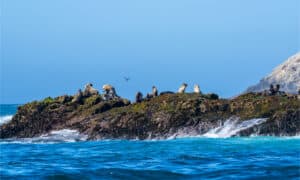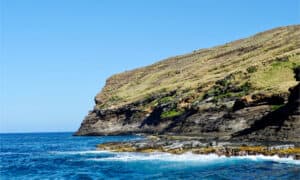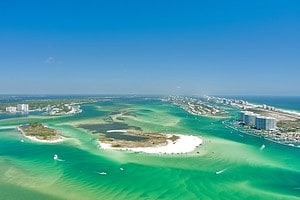Introduction
In 1942, Japanese forces claimed an Alaskan island as a military strategy during World War II. The island, which many indigenous people of Alaska inhabited, was devasted by Japanese occupancy. The event resulted in hysteria among Americans, a blood-soaked battle between the United States and Japanese forces, and the loss of several American, Japanese, and indigenous Alaskan lives. Today, the island signifies an important but often forgotten story of hardship and war.
While the island’s history lives on through its resident’s descendants, its original inhabitants’ culture, art, and language appear to be fading away. However, the island’s climate, natural landscape, wildlife, and other islands remain. Find out which island in Alaska was the site of a World War II battle and discover what natural characteristics make this island so unique.
What are the Aleutian Islands?
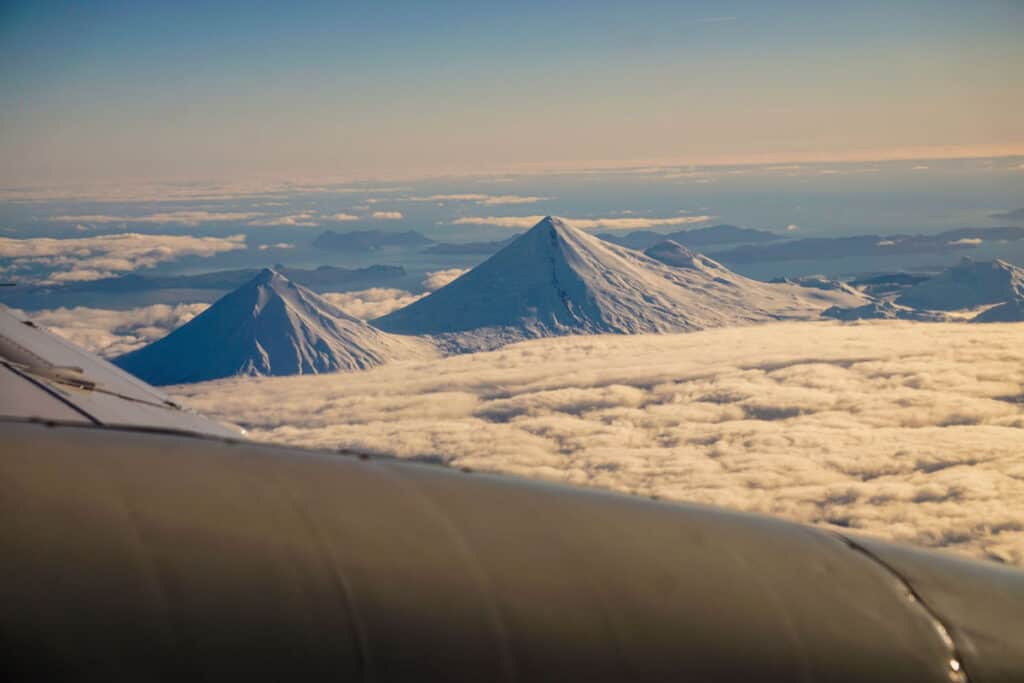
The Aleutian Islands are part of an island chain in Alaska.
©iStock.com/Daniel Mark Robertson
The Aleutian Islands comprise a chain of islands that sit on the southwestern tail of the state of Alaska. These islands act as a border between the Bering Sea and the Pacific Ocean. They stretch a length of 1,100 miles. The westernmost island and the westernmost point of the United States take the form of Attu Island, where a battle occurred during World War II.
The Ring of Fire is a colloquial term for a portion of the Aleutian Islands where numerous volcanoes and mountaintops reside. While many volcanoes are dormant within the island chain, some remain active. For instance, the Shishaldin Volcano is an active volcano that lies within the Aleutian Islands.
Where is Attu Island Located on a Map?
Attu Island is the westernmost point of the United States and is the westernmost of the Aleutian Islands. The island sits just 500 miles east of Russia and is a vast tundra plagued by storms across all seasons. The Aleutian Islands stretch for a length of 1,100 miles off the coast of Alaska and are home to indigenous Alaskan people.
Aleutian Islands: Climate
The climate in the Aleutian Islands includes abundant rainfall, frequent winds, fog, and consistent temperatures throughout the year. Plant life in the island chain lacks many trees, but it includes various flowering plants and grasses. Large portions of the Aleutian Islands, spanning some 4,250 square miles, are protected by the Alaska Maritime National Wildlife Refuge.
Indigenous to the Aleutian Islands were the Unangan, also known as the Aleut tribe. The people group lived undisturbed in the island chain for approximately 8,000 years. When Russia began to explore the islands, a recorded 25,000 Unangans lived there. The first to discover the islands were Vitus Bering and Aleksey Chirikov. Bering first found the western portion of the Aleutian Islands, and Chirikov discovered the eastern portion. After news of the discovery reached Russia’s mainland, hunters moved into the Aleutian Islands, hoping to become rich off the fur trade, as many animals with sought-after furs resided there.
As Russia gained control over Alaska and the Aleutian Islands, they greatly oppressed the Unangan people. Many Unangans were killed, forced to move, or enslaved by the Russians. Eventually, though, Russia gave over Alaska to the United States. In 1867, the United States gained control of Alaska and its Aleutian Islands through the Alaska Purchase.
Wildlife in the Aleutian Islands
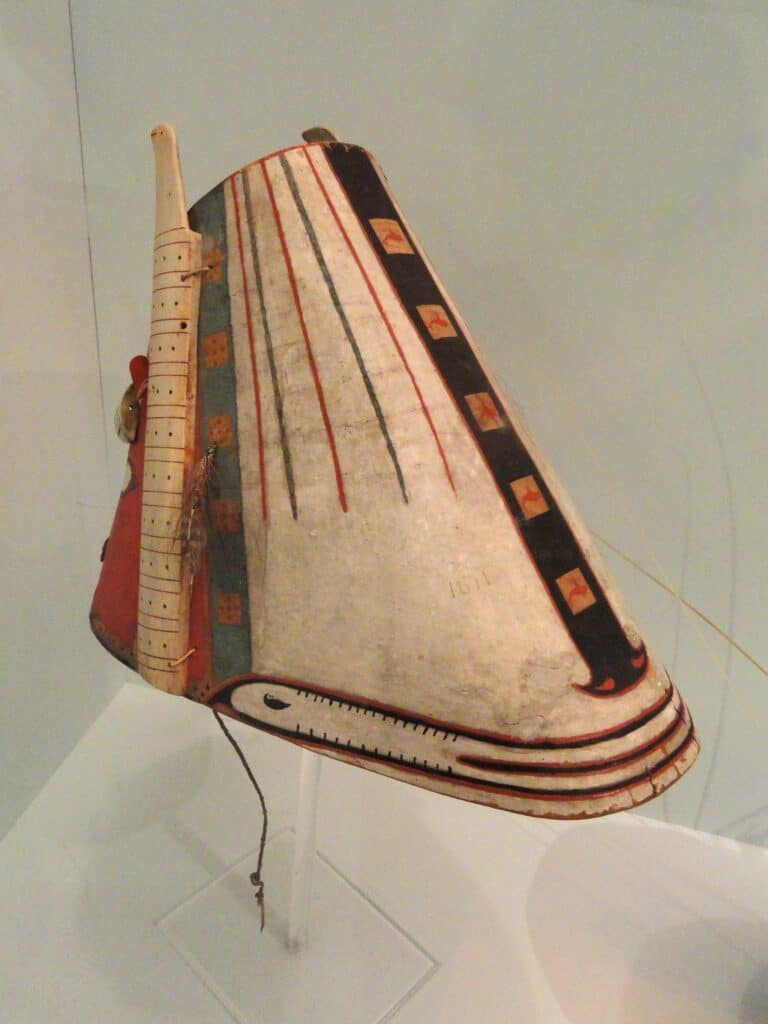
Aleut man’s hat on display at Peabody Museum at Harvard University.
© – License
Wildlife within the island chain is diverse and unique to the region. Land animals range from foxes to caribou, and humans introduced most land mammals. Sea mammals include the northern sea otter, the harbor seal, and the Steller sea lion. Fish species in the Aleutians include cod, sablefish, pollack, sand lance, herring, and more.
However, the most prominent animals within the Aleutian Islands are birds. Over 10 million birds make nests in the region during the summer season. The most common birds of the Aleutians are puffins, gulls, and kittiwakes, to name a few. One colony of northern fulmars includes 1.5 million members. This colony can be found on Chagulak Island within the Aleutians. Furthermore, approximately half of the emperor geese population across the globe lives in the Aleutian Islands during winter. Some bird species in the Aleutians cannot be found anywhere else on the North American continent. These include tufted ducks, black-headed gulls, Siberian ruby-throats, whooper swans, far eastern curlews, and wood sandpipers.
Attu Island
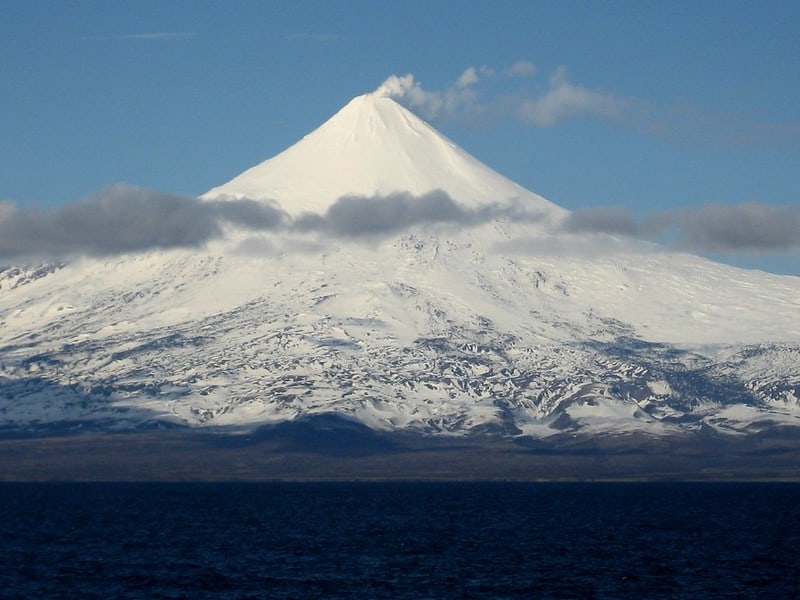
Shishaldin is the tallest volcano located in Alaska.
©NOAA Photo Library / flickr – License
The westernmost point of the United States, Attu Island, experienced the only World War II battle ever to take place in North America. The island sits just 500 miles east of Russia and is a vast tundra plagued by storms across all seasons. Attu Island is unique because its climate and characteristics make it one of Earth’s grimmest and most formidable locations. Bodies of water in and around Attu Island include Holtz Bay, Massacre Bay, and the Chichagof Harbor. While a few Aleut tribal villages once settled in Attu, they were destroyed during the Japanese occupation.
In 1942, Japan occupied Attu Island, which triggered panic throughout the American Homefront. The idea that Japan could lay claim over United States territory during the war was frightening. Some believed it was the start of other Japanese occupations in the United States. When Japan bombed Dutch Harbor, many Unangans were relocated from the Aleutian Islands to Southeast Alaska.
When Japan invaded Attu Island, Unangan residents were taken as prisoners of war. The Japanese starved the Unangan, which resulted in death for approximately half of the Attu Unangan. Those that survived being prisoners of war were relocated to Atka in the Aleutian Islands; they never returned home to Attu Island.
In May 1943, troops from the United States went head-to-head with Japanese soldiers on Attu Island. Fighting between the two armies lasted several days until the United States wiped out Japanese forces. Of the 1,000 Japanese soldiers to advance in the final battle, only 29 survived. For the United States, 1,750 causalities were recorded, most of which directly resulted from Attu’s unfavorable climate conditions.
Attu Island’s Involvement in WW2
The World War II Valor in the Pacific National Monument now includes a tribute to the U.S. soldiers who fought and lost their lives during the battle at Attu Island. Furthermore, remnants of trenches, shrapnel, shells, and more can be encountered across the eastern part of Attu Island. Bits and pieces of history can be found in the formidable tundra Attu, paying tribute to the sacrifices made by U.S. soldiers and the Unangan people.
While a crucial battle occurred on Attu during the Japanese occupation, the island served other purposes during World War II. For example, the United States used Attu Island as a launch site for bombs sent over to Japan during the war. Following the battle, airfields, roads, and camps were constructed on Attu Island. One unique feature left from the war is an over 3,000-foot-long bombproof storage tunnel on the island.
Lost Villages of the Aleutians was a project that served to commemorate and memorialize Unangan life following the battle at Attu Island and the end of World War II. Lost Villages of the Aleutians recorded a history comprised of interviews and secondary sources. The project allowed former Attu Island residents and descendants of Attu Island residents to visit the location, rediscover their cultural history, and honor their ancestors. Sites visited by the Lost Villages project included Makushin, Kashega, and Biorka.
Memorializing Unanga Life
In addition to the Lost Villages of the Aleutians project, former residents of Attu Island and their descendants gathered for an Attu reunion in Anchorage, Alaska, in the fall of 2012. Many attendees shared testimonies and pictures at the reunion. Other events sponsored by the National Park Service and other organizations have allowed Attu descendants to learn more about their history and culture.
One former resident of Attu, Nick Golodoff, created a memoir called Attu Boy. Golodoff tells his ongoing story of self-discovery after being taken from Attu Island by the Japanese when he was six years old. Another book called Lost Villages of the Eastern Aleutians tells the story of several Aleutian villages that were devasted by World War II, even though they had remained strong throughout Russian and American sovereignty.
The photo featured at the top of this post is © iStock.com/Daniel Mark Robertson
FAQs (Frequently Asked Questions)
What happened at Attu Island?
During World War II, Japan occupied Attu Island and captured many of its indigenous people. In response, American and Japanese soldiers fought in a battle at Attu. The United States regained their claim over Attu Island.
What tribe is native to the Aleutian Islands?
The Aleut tribe, or the Unangan people, are native to the Aleutian Islands.
Where is Attu Island located?
Attu Island is the westernmost point of the United States, located within the Aleutian Islands on the tail of Alaska.
Thank you for reading! Have some feedback for us? Contact the AZ Animals editorial team.



